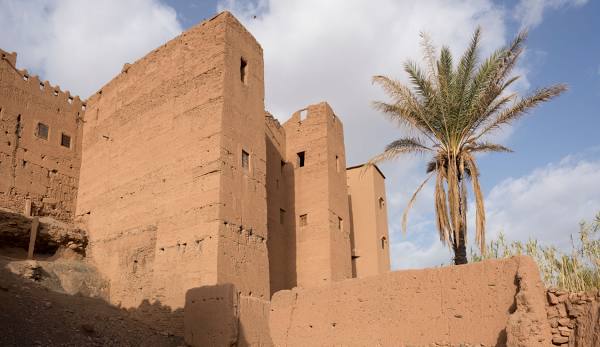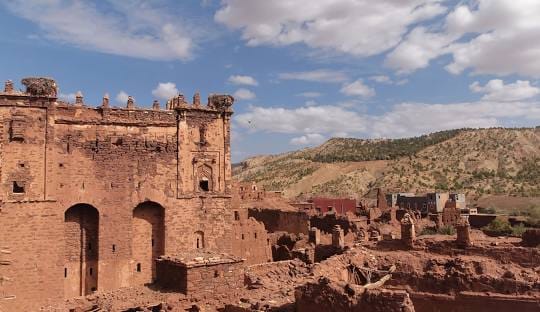An introduction into the Untold Heritage of Morocco.
Morocco boasts of beautiful beaches, colourful souks and the Sahara Desert. But there is more than these common attractions; behind them there are hidden kasbahs ancient castles whose secrets of power, culture and stamina are neither known nor told. In distant valleys, deserts, and mountain tracks, these epic lost landmarks give those who travel to Morocco a possibility of getting to experience the Moroccan rich past without getting into the tourist throng.
The Heritage of Morocco’s Secret Kasbahs
Centuries of Change Eye-Witnesses
A lot of the kasbahs in Morocco were constructed several centuries ago. They used to be the hiding places of powerful families and the hub of commerce. Others have collapsed through the burden of time but their silent walls continue to sing the songs of survival and change.
H 3: Cultural Significance Now
The kasbahs that are hidden are still emblems of the Moroccan heritage. They are the vaguery of local construction and the rich history of inhabitants who constructed them. Visiting these fortresses makes visitors relate with the timeless Middle East spirit of the past in Morocco.
Stunning Hidden Kasbahs to visit
Kasbah Tamnougalt (Draa Valley)
Kasbah Tamnougalt is a tiny maze of earthen walls and towers in a gorgeous Draa Valley. It is still a partially ruined palace but it gives an idea of how luxurious southern Morocco buildings can be and the views of palm trees can take your breath away.
It is possible to translate incorrectly the word Tamenokalt to the language of the Amazigh people: the point of meeting or even affair. This indicates that Tamenokalt was an assemblage area. Background
Tamnougalt was a garrison-town during the Saadian times. This political and economic duty began with the visit and arrival of Caid Taleb Hassan by the Alaouite Sultan in the 18 th century. During one of his visits to Du Foucauld in 1884 he wrote that it was “the seat of the district governed by the Caid Abderrahmane Ben Hassan.” In 1907 the chief of the region, Si Mohamed furnished his troops in Mezguita to protect Sultan Moulay Hafid against his bro.

In 1919 Thami El Glaoui introduces a harka to govern the area, which causes his cousin, Hammou, to make the kasbah his residence.
Kasbah Tizzarouine (Boumalne Dades)
Situated above beautiful Dades Valley, Kasbah Tizzarouine takes the visitors back to the defensive history of Morocco. It has an advantageous location that offers a perfect place to witness the transformation of colors in the valley as the sun sets.
Kasbah Telouet (Beautiful Atlas Mountains)
Located secretly in the High Atlas, Kasbah Telouet used to be the property of the powerful family of El Glaoui. Most of the rooms have elaborate zellij and wood carvings which demonstrate the artistic skill of Moroccan carpentry in spite of their weathered conditions.
The Kasbah of Telouat (Telouet) is a kasbah along the former caravan route from the Sahara to Marrakesh across the High Atlas Hills. It was restored in the 18th and 19th centuries. The kasbah was the seat of power of the Glaoui family members, and is as a result sometimes called “Dar El Glaoui.” The kasbah struggles with constant damages and slow decay, yet it is still feasible to check out. In 2010, the kasbah underwent some repair work.

The passage of trade caravans connecting the Sahara to the significant cities beyond the High Atlas Mountains and the distance to the salt mines made Telouat a well-off location for the pashas who made their home there. The present kasbah was built beginning in 1860 by the Glaoui family, beside an old kasbah whose ruins can still be seen today. It was later significantly increased throughout the initial half of the 20th century. Tale has it that 300 employees took three years to decorate the ceilings and wall surfaces. The walls are made of plaster and ceramic tiles for the walls, and cedar board for the ceiling. The ceilings are covered with eco-friendly ceramic tiles.
Preservation Pains
Most of these hidden kasbahs are in danger of erosion, abandonment, and modernization. Repairing such flimsy structures is expensive, and the communities in the areas where these structures are located generally fail to sustain them. The tourists who visit these places contribute to conservation, since they help attract attention and economic significance to the heritage that the places depict. What is the point of visiting the forgotten fortresses of Morocco?
Unusual Travel Experience
Secret kasbahs allow a feeling of exploration. They are located far away from popular tourist destinations and allow a real engagement of Morocco’s landscape and history.
A Glimpse into the Past of Morocco
These strongholds recount the histories of merchandising paths, partnering, and social assimilation. Making oneself through their small alleys gives a visitor an understanding of how people lived and how they used to defend their homes.
Conclusion: Finding the Hidden Custodians of the Past
Kasbahs hidden under sand in Morocco are more than ruins, they can protect memories and culture. These forgotten fortresses are a great opportunity to travel back in time to see authentic architecture and help to preserve the diversity of Moroccan heritage in case you are a tourist who enjoys unusual experiences. Visiting them makes any journey through the country interesting.

